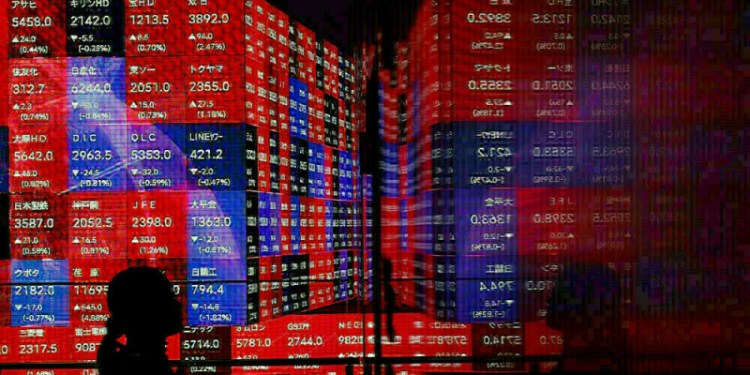 © Reuters. A Flatter Yield Curve Is No Reason to Freak
© Reuters. A Flatter Yield Curve Is No Reason to Freak(Bloomberg View) — There are not many sure things in economics, but today I am going to share the closest thing to a foregone conclusion I have seen: When the yield curve inverts, an economic recession is coming.
Oddly enough, this is the subject of no small measure of confusion among traders, investors and even economists.
First, a quick definition: An inversion occurs when the yield on longer-term bonds is lower than the yield on shorter-term bonds. In other words, a buyer gets paid less to tie up capital for longer periods of time. Consider the 10-year and two-year Treasury bonds as a good pair to monitor the yield curve. The spread is the difference between the yields of the two.
There is confusion for all the usual reasons of myth, exaggerations and failure to consider the data. Let’s try to resolve all of that today:
No. 1. The yield curve is not a linear relationship: There seems to be a thought that as the yield curve flattens things will get steadily worse until we reach a full inversion, at which point disaster strikes. But a flattening curve isn’t the same as an inversion. And a less steep positively inclined curve is not always a harbinger of bad news.
When the yield curve does invert, it typically means the economy has reached a tipping point. It often indicates that the Federal Reserve has been raising short term rates to slow the extension of credit, usually out of concern that the economy is overheating and inflation will accelerate too much. Tightening tends to slow business expansion and put the brakes on growth, making the economy more susceptible to recession. But up until that point, even as the curve flattens, the economy can still expand and easily avoid a contraction.
No. 2. A Fed tightening cycle flatten the yield curve: The environment before an inversion is a curve flattening — when the spread between longer term and shorter-term bonds gets narrower. (The opposite, when the spread between short- and long-term bonds widens, indicates a steepening curve.) A flattening curve does occasionally worry some traders, as it looks like and an inversion is that much closer.
When the Fed is in a tightening cycle, as it is now, the federal funds rate — the rate banks charge each other for overnight loans — is raised. This lifts the end of the yield curve representing short-term interest rates. This acts to narrow spreads, and make the curve flatter. But a flat curve and an inverted curve are two very different creatures, and should be viewed differently.
Moreover, the lack of significant inflation suggests that the so-called term premium longer-term bond holders receive to compensate for inflation risk is all but gone. Former Fed Chair Janet Yellen observed in December 2017 that the term premium was “quite low, close to zero.” Structurally, she noted, “the yield curve is likely to be flatter than it’s been in the past.”
In other words: With inflation low, and the Fed moving off of its extraordinary accommodation after the financial crisis, a flattening yield curve shouldn’t cause fears of an imminent recession.
No. 3. There are substantial lags between inversion and recession: Since 1978 there have been five recessions, and five yield-curve inversions. My colleague Ben Carlson calculated the average lag at 17 months between inversion and the onset of recession during that 40-year period.
No. 4. Fed overtightening is a concern: We should note inversions and recessions are correlated, but inversions also reflect other causative factors. The big fear is that the Fed, still scarred by the 1970s and overly wary of inflation, has the tendency to react late and then overtighten.
To cool off an overheating economy and to throttle inflation before it can get out of control, the Fed can and has choked off credit, often a precursor to a recession. This is really the fear that an inverted yield curve represents. It is not especially good for employment, wages, consumer spending or corporate profits.
No. 5. Stocks also lag in reacting to inversions: There is another myth that stocks get killed when the yield curve inverts. That is wrong: it isn’t the inversion per se, but rather the impact of tighter credit on corporate profits.
During the five periods between each inversions and the subsequent recession that followed, stock returns have ranged from a loss of 15.6 percent to a gain of 37.6 percent, for an average return of a 15 percent gain. However, as Carlson observes, once the market does begin to retreat after an inversion, all bets are off: losses ranged from a mildly unpleasant 17.1 percent (Feb 1980) to a disastrous 57 percent (Oct 2007).
The bottom line is that inversions have been a fairly reliable predictor of recessions, although with a lag. But they are not the cause of recessions, and for that traders need to watch corporate profits.
Source: Investing.com




























